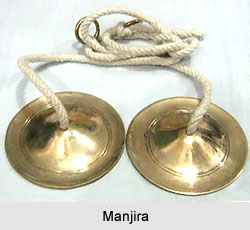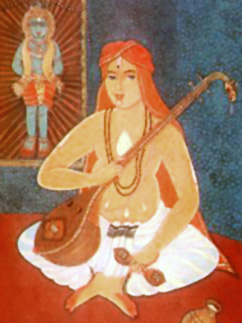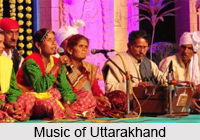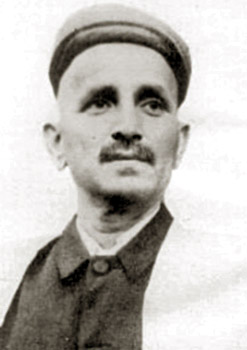 Melas of Odissi music form a very important part of the musical structure. That which has the capacity to build a Raaga is called Mela or Thhat. Incidentally usually `Mela` is used in Carnatic and `Thhat` in Hindustani. It consists of seven Swaras. The number of Melas is different in each system. V. N. Bhatkhande put all the Raagas into ten Melas. Odissi music usually follows the ten-mela formula. But according to some musicologists, there should be 32 Melas in Odissi music as all Raagas of Odissi music can not come under the ten-mela formula.
Melas of Odissi music form a very important part of the musical structure. That which has the capacity to build a Raaga is called Mela or Thhat. Incidentally usually `Mela` is used in Carnatic and `Thhat` in Hindustani. It consists of seven Swaras. The number of Melas is different in each system. V. N. Bhatkhande put all the Raagas into ten Melas. Odissi music usually follows the ten-mela formula. But according to some musicologists, there should be 32 Melas in Odissi music as all Raagas of Odissi music can not come under the ten-mela formula.
32 Melas according to Guru Lokanath Pala
He divides Raagas into two parts. He places 16 Raagas under Sudha Madhyam category and another 16 Raagas under Tivra Vikrit Madhyam, category. He has taken the name and swara of these 32 Melas from among the 72 Melas of Carnatic music mentioned in Raaga Laxyanam Sastra. The Raagas in the Sudha Madhyam category are Shankara bharana - sa re ga ma pa dha ni (all sudha); Suriya Kanta - Sa re, ga ma pa dhani (re Komal), Gauri manohari - Sa re ga ma pa dha ni (ga Komal), Sarsangi - Sa re ga ma pa dhci ni (dha Komal), Kamodi - Sa re ga ma pa dha ni ( ni Komal), Tana rupi - Sa re ga ma pa dha ni (re, ga Komal), Rag bardhani - Sa re ga m,a pa dha ni (dha and ni Komal), Malva gauda - Sa re ga m,a Pa dha ni (re and dha Komal), Chakrabak - Sa re ga ma Pa, dha ni (re and ni Komal), Kirbani - Sa re ga ma Pa dha ni (ga and dha Komal), Har Priya - Sa re ga ma pa dha ni (ga and ni Komal), Dhenuka - Sa re ga ma. pa dha ni (re, ga and dha Komal), Nat Bhairavi - Sa re ga ma pa dha ni (ga, dha and ni Komal), Bakula Bharan - Sa re ga ma pa dim, ni (re, dha and ni Komal), Natak Priya - Sa re ga ma pa dim ni (re, ga and ni Komal) and Bhairavi - Sa re ga ma pa, dha ni (re, ga dha and ni Komal).
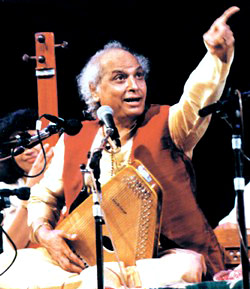 Among the Raagas ion the Tivra Madhyam Category are Kalyani - Sa re ga ma pa dha ni (ma swara tivra), Gamanashrama - Sa re ga ma Pa dha ni (re, komal and ma tibra), Nitimati - Sa re ga ma Pa dha ni (ga komai and ma tivra), Dhatubardhani - Sa re ga m,a pa dha ni (ma tibra and dha komal), Bachaspati - Sa re ga ma pa dha ni (ma tivra and ni komal), Pabani- Sa re ga ma pa dha ni (re, ga komal and ma tivra), Jyotiswarupini - Sa re ga ma pa dim ni (ma tivra and dha and ni komai), Baradi - Sa re ga ma pa dha ni (re, dha komal and ma tivra), Rasa Priya-Sa re gam,a pa dhani (re, ni komal and ma tivra), Hemabati - Sa re ga ma pa dha ni (ga and ni komal and ma tivra), Todi -Sa re ga mapa dha ni (re, ga dha komal and ma tivra), Shyamcdangi - Sa re ga ma pa dha ni (ga dha ni komal and ma tivra), Dhahalambari -Sa re ga ma pa dha ni (re, dha, ni komal and ma tivra), Nabanita- Sa re ga ma pa dha ni (re, ga, ni komal and ma tivra), Gabambodhi -Sa re ga ma pa dha ni (re, ga, dha and ni komal and ma tivra)
Among the Raagas ion the Tivra Madhyam Category are Kalyani - Sa re ga ma pa dha ni (ma swara tivra), Gamanashrama - Sa re ga ma Pa dha ni (re, komal and ma tibra), Nitimati - Sa re ga ma Pa dha ni (ga komai and ma tivra), Dhatubardhani - Sa re ga m,a pa dha ni (ma tibra and dha komal), Bachaspati - Sa re ga ma pa dha ni (ma tivra and ni komal), Pabani- Sa re ga ma pa dha ni (re, ga komal and ma tivra), Jyotiswarupini - Sa re ga ma pa dim ni (ma tivra and dha and ni komai), Baradi - Sa re ga ma pa dha ni (re, dha komal and ma tivra), Rasa Priya-Sa re gam,a pa dhani (re, ni komal and ma tivra), Hemabati - Sa re ga ma pa dha ni (ga and ni komal and ma tivra), Todi -Sa re ga mapa dha ni (re, ga dha komal and ma tivra), Shyamcdangi - Sa re ga ma pa dha ni (ga dha ni komal and ma tivra), Dhahalambari -Sa re ga ma pa dha ni (re, dha, ni komal and ma tivra), Nabanita- Sa re ga ma pa dha ni (re, ga, ni komal and ma tivra), Gabambodhi -Sa re ga ma pa dha ni (re, ga, dha and ni komal and ma tivra)
36 Melas according to Guru Gopalchandra Panda
Guru Gopalchandra Panda suggests that by accepting 36 Melas alone the distinct identity of Odissi can be preserved. According to him Sudha Madhyam category will include eighteen Raagas and Tibra Madhyam will include another eighteen Raagas. Sri Panda suggests that to make it easier for the learners the following 4 Melas can be added to the 10 Prevalent Melas given above. The four Melas he suggests are: Nata Narayana, Anand Bhairabi, Melaparnee and Pancham Baradi. Thus for operational purpose he limits the number of Melas to 14.
Though 32 Melas have been conceived in Hindustani and 72 in Carnatic, for all practical purposes, they manage with 10 Melas and 19 Melas respectively. Unlike Carnatic Hindustani resembles Odissi in its Swara Samsthan. So the generic principles of Odissi Melas can be same as Hindustani. Many of the contemporary Hindustani maestros like Pandit Ravisankar, Pandit Jasraj, Ustad Amajad Ali Khan etc. have innovated new Raagas. But all these new Raagas are being adjusted within those ten Melas.
